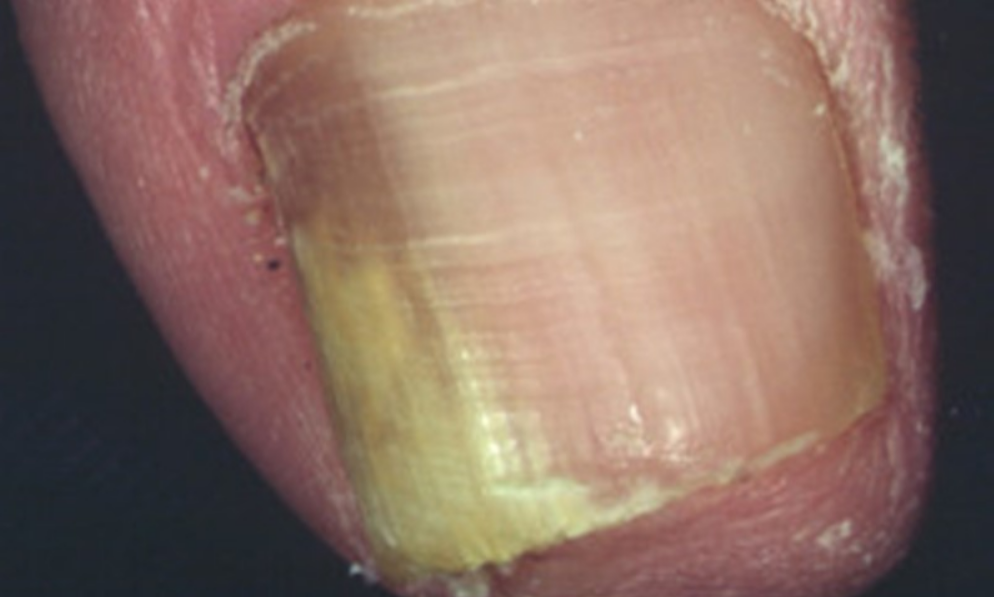Fungal nail infections, also known as onychomycosis, are a common condition affecting many people at some point in their lives. While not usually serious, these infections can be unpleasant and challenging to treat. Understanding the causes, symptoms, and treatment options is essential for effective management and prevention.
Understanding Fungal Nail Infections
What is Onychomycosis? Onychomycosis refers to a fungal infection that affects the nails, leading to changes in their appearance. Typically, toenails are more commonly affected than fingernails. The infection causes the nail to become discolored, thickened, and distorted, impacting both its function and aesthetics.
Symptoms to Watch For: Fungal nail infections can develop slowly and might not present noticeable symptoms initially. As the infection progresses, you may observe:
- Discoloration: The nail may turn white, black, yellow, or green.
- Thickening and Distortion: The nail can become unusually shaped or textured, making it hard to trim.
- Brittleness: The nail may become brittle, with pieces breaking off.
- Pain or Discomfort: Particularly when placing pressure on the affected toe or finger.
- Adjacent Skin Issues: Nearby skin may become infected, itchy, cracked, red, or swollen.
Causes of Fungal Nail Infections
Most fungal nail infections are caused by fungi that also lead to athlete’s foot. These fungi thrive in warm, dark, and moist environments, making feet particularly susceptible. Key risk factors include:
- Poor foot hygiene
- Wearing hot, sweaty shoes
- Walking barefoot in communal areas like showers and locker rooms
- Nail damage
- Weakened immune system
- Health conditions such as diabetes, psoriasis, or peripheral arterial disease
Treatment Options
1. Antifungal Medications:
- Oral Tablets: These can be effective but may have side effects. They work by treating the infection from within the body.
- Topical Nail Paints: Applied directly to the nail, these treatments target the infection locally. They are less invasive but may require consistent use.
Treatment success rates are around 60-80%, with full recovery potentially taking 6-18 months. It’s crucial to follow the treatment regimen until completion to avoid recurrence.
2. Softening and Scraping: This method involves using a 40% urea paste to soften infected nail parts, which are then scraped away.
- Procedure:
- Apply the paste and cover with plasters for 24 hours.
- Wash off the paste and scrape away the softened parts of the nail.
- Repeat daily for 2-3 weeks.
- Follow-Up: Once the infected parts are removed, using antifungal nail paint can help prevent re-infection.
3. Nail Removal: For severe cases where other treatments fail, nail removal might be necessary. This can be done surgically or chemically.
- Recovery: A new nail will eventually grow back, but this can take up to a year.
4. Laser Treatment: Laser treatment involves using high doses of light energy to destroy the fungus. Although promising, it’s not yet a standard treatment due to limited evidence and high costs. Typically, multiple sessions are required, and the treatment is usually not covered by insurance.
Preventing Fungal Nail Infections
Whether undergoing treatment or not, prevention is key to managing fungal nail infections. Follow these tips:
- Do:
- Keep hands and feet clean and dry.
- Wear well-fitting shoes made of natural materials and clean cotton socks to allow feet to breathe.
- Clip nails regularly and avoid sharing nail clippers.
- Replace old footwear that may be contaminated.
- Treat athlete’s foot promptly to prevent it from spreading to the nails.
- Wash towels regularly and ensure proper sterilization of nail salon equipment.
- Don’t:
- Avoid sharing towels and socks.
- Refrain from walking barefoot in public pools, showers, and locker rooms; use protective shower shoes.
When to Seek Professional Help
If a fungal nail infection causes significant discomfort, affects your daily activities, or does not improve with over-the-counter treatments, consult a healthcare provider. They can recommend appropriate treatments or further diagnostic tests.
Fungal nail infections can be managed effectively with the right approach and preventive measures. By understanding the condition and following a tailored treatment plan, you can restore the health and appearance of your nails.




